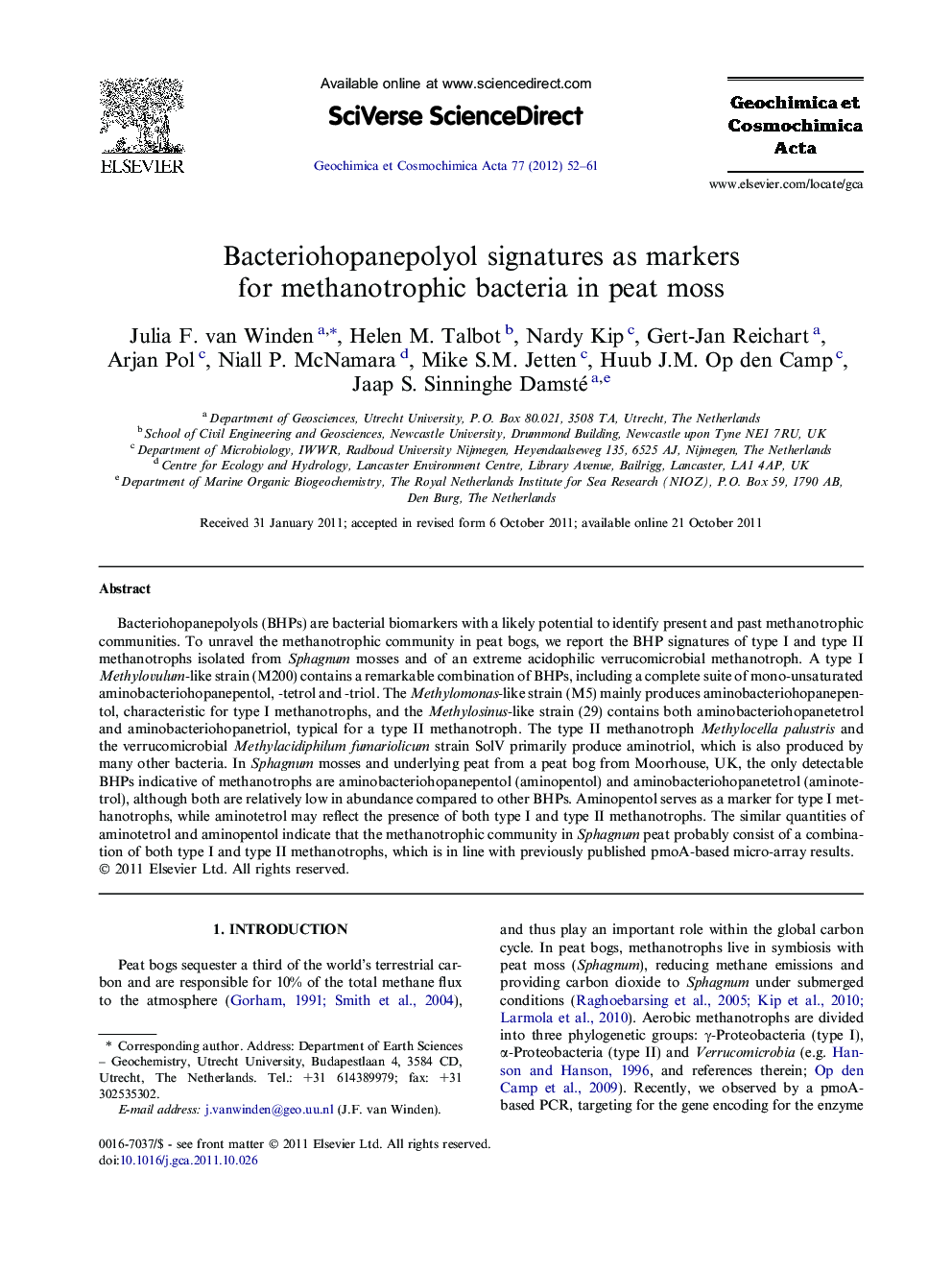| Article ID | Journal | Published Year | Pages | File Type |
|---|---|---|---|---|
| 6439342 | Geochimica et Cosmochimica Acta | 2012 | 10 Pages |
Abstract
Bacteriohopanepolyols (BHPs) are bacterial biomarkers with a likely potential to identify present and past methanotrophic communities. To unravel the methanotrophic community in peat bogs, we report the BHP signatures of type I and type II methanotrophs isolated from Sphagnum mosses and of an extreme acidophilic verrucomicrobial methanotroph. A type I Methylovulum-like strain (M200) contains a remarkable combination of BHPs, including a complete suite of mono-unsaturated aminobacteriohopanepentol, -tetrol and -triol. The Methylomonas-like strain (M5) mainly produces aminobacteriohopanepentol, characteristic for type I methanotrophs, and the Methylosinus-like strain (29) contains both aminobacteriohopanetetrol and aminobacteriohopanetriol, typical for a type II methanotroph. The type II methanotroph Methylocella palustris and the verrucomicrobial Methylacidiphilum fumariolicum strain SolV primarily produce aminotriol, which is also produced by many other bacteria. In Sphagnum mosses and underlying peat from a peat bog from Moorhouse, UK, the only detectable BHPs indicative of methanotrophs are aminobacteriohopanepentol (aminopentol) and aminobacteriohopanetetrol (aminotetrol), although both are relatively low in abundance compared to other BHPs. Aminopentol serves as a marker for type I methanotrophs, while aminotetrol may reflect the presence of both type I and type II methanotrophs. The similar quantities of aminotetrol and aminopentol indicate that the methanotrophic community in Sphagnum peat probably consist of a combination of both type I and type II methanotrophs, which is in line with previously published pmoA-based micro-array results.
Related Topics
Physical Sciences and Engineering
Earth and Planetary Sciences
Geochemistry and Petrology
Authors
Julia F. van Winden, Helen M. Talbot, Nardy Kip, Gert-Jan Reichart, Arjan Pol, Niall P. McNamara, Mike S.M. Jetten, Huub J.M. Op den Camp, Jaap S. Sinninghe Damsté,
